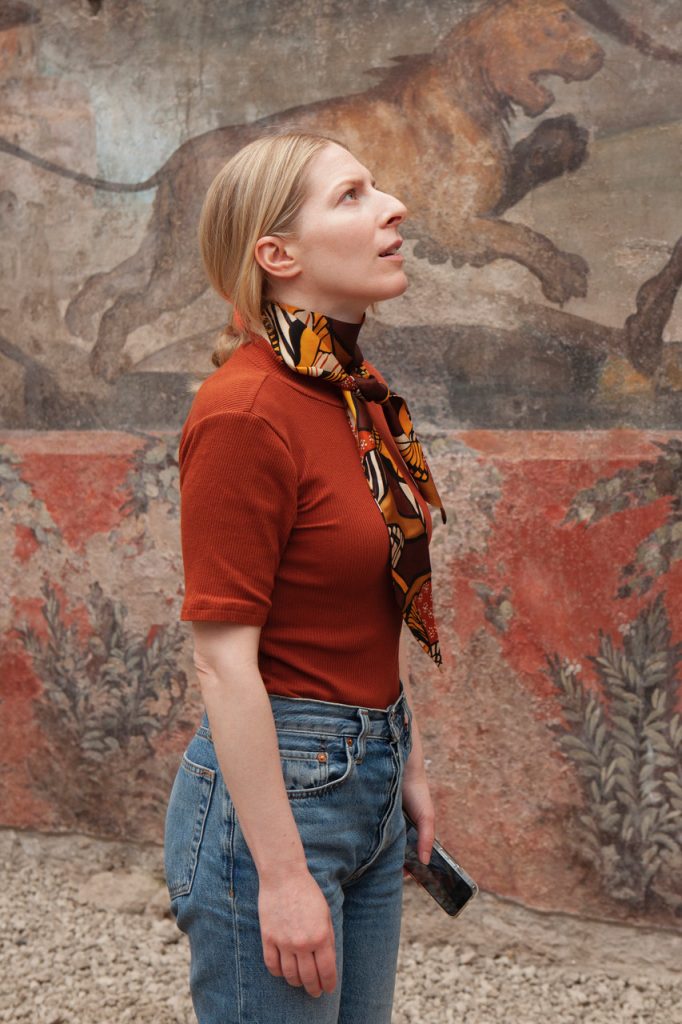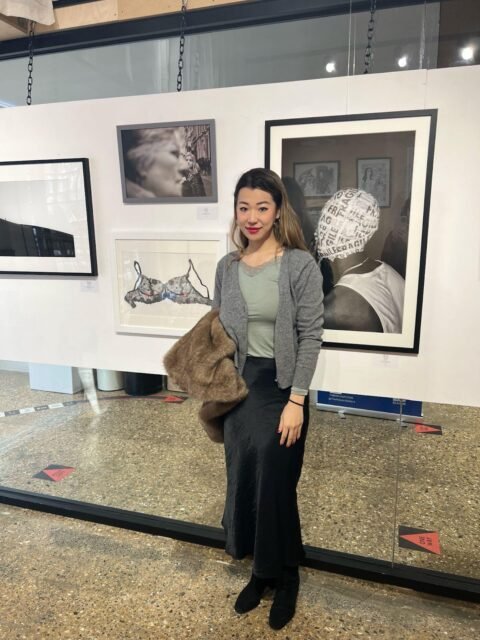
Amedeo Benestante/Courtesy photo
It was a series of connections that brought artist Allison Katz to stage Aspen Art Museum’s current exhibition “House of the Trembling Eye.”
Katz — who has spent over a decade investigating ways that “aesthetic practices link and absorb personal narrative, commodity culture, information systems, and art history” — found herself in a residency studying fresco painting through Pompeii Commitment, a program curated by Stella Bottai, who also serves as senior curator at large for Aspen Art Museum.
It was through the work she was doing in Pompeii around the placement of paintings as well as conversation around the ancient house being a precursor to the modern museum that she received an invitation to curate a show marking Aspen Art Museum’s 45th anniversary and the 10th anniversary of its Shigeru Ban–designed building.
“House of the Trembling Eye,” which opened on Thursday, May 30, and runs through Sunday, Sept. 29, is a group exhibition staged by Katz across three floors of the museum that features over 100 works that include her paintings alongside artworks by over 50 artists, as well as a series of frescoes from Pompeii that are being shown in North America for the first time.
The Aspen Times’ arts and entertainment editor, Sarah Girgis, chatted with her about the juxtaposition between ancient and modern, the challenges of stepping into a curator role, and what she learned about Aspen in the process.
The interview has been edited for clarity and brevity.

Sarah Girgis: When you were first approached by Aspen Art Museum, what excited you about the project?
Allison Katz: Aspen Art Museum is a non-collecting museum, so the pitch was to make a show with local collections. My first thought was that this idea of taking works from private collections and bringing them into a public house had affinities with exactly the thing I was looking at, and that it would be the perfect template to graft back onto the museum as a structuring device.
It was important to me that we get the actual frescoes or pieces of Pompeii in because it situates painting on a continuum of 2,000 years. The works in Pompeii are so alive and remarkably contemporary that it was also a way to sort of almost ascend or transcend a particular moment in time and beyond painting time.
A show like this would only be possible in Aspen. There is a concentration of world-class art that is lived here. It was the research I happened to be doing at that moment. So, it all aligned.
SG: You are an artist first; how was it to step into the role of curator?
AK: I wanted the conversations to be as much as they are between viewer and painting to be between paintings because I’m not a curator, I’m a painter.
That’s the strength of the Aspen Art Museum as an institution — they are so artist-led. It was an amazing opportunity for me to almost take the practice of painting as I do it privately in the studio and extend it into choreographing other paintings. I also wanted to preserve the event of the exhibition, where in this temporary moment, all these disparate things come together, they form a new thing, and then they go back. Painting has this very flexible, wildly kind of inexhaustible capacity to be seen anew when you put it next to something else.
SG: Aspen has a lot of serious art collections. How did you sift through what was available and ultimately choose?
AK: I asked very much to be guided by the museum. I didn’t want it to become personal for me. We kept the process, the plans, and everything private. No one was let in on how I would use the work. I was able to visit certain collections in person last year. And then once I was home in London, I was sent files to look through. I didn’t want to know from whose collections because I wanted to maintain the vision of the project. It was work-led. So that’s how we devised it. Because what I wasn’t interested in doing was just going into people’s homes and saying ‘I like this’ and ‘I don’t like that.’
SG: When you’re approaching other people’s work, do you feel a responsibility to the other artists whose work you are showing?
AK: Oh, yeah, hugely. I also think that it’s such a privilege to be able to spend this amount of time with these paintings and to understand that they are loved by other people — but they’re not necessarily shared publicly so often. There was a real kind of sense of discovery that never gets old.
And I felt a huge amount of responsibility to also respect each painting and their stories as much as I was then trying to make a new world temporarily.
SG: What did you learn about Aspen through this process?
AK: Well, first, I learned that the museum is extraordinary and very unique in the way that they trust artists 100%, which is very unusual.
One of the biggest things I learned was that you don’t know what’s gonna happen even when you think, you know. I was constantly amazed by the connections. That kind of kept happening between works even once I thought I’d kind of understood something there would be another layer that would reveal itself.
SG: You have your paintings scattered throughout the exhibition; how did you kind of think about your work in relation to the other pieces?
AK: I would say half my works are new, and half the works are recent. But what was exciting for me as a curator was that I was being led by my paintings. So these are things that I was interested in any way, or these were things that I would be painting anyway. And they kind of became expanded, like certain motifs already related, to some of the themes I was able to lift. I wanted my painting to be seen as an act of curating as well and curating as an act of painting. It had to be blurred, which is the same as the house; it was blurred between public and private. And in this instance, the curator and artist are very blurred.
SG: Why title the exhibition “House of the Trembling Eye?”
AK: In Pompeii, they always named the house by some identifying feature. So they’ll be like “House of the Tragic Poet,” “House of the Golden Bracelet,” etc. So I kept thinking to myself, like, ‘What is specific about this house?’ And it’s obviously like this interweaving of the front of the building. I also kept thinking about the word Aspen and the tree. Trembling leaves that linked back into the trembling of the dubious and the earthquake (in Pompeii) and the reason why we even have these fragments. The destruction that is your preservation. And then the eyes, obviously, because that’s the way we can see the paintings but also the way they’re on the aspen trees. I was, like, this is too good; painting is connected to the eye. Even though it was hard to finalize that title, now it makes sense.




